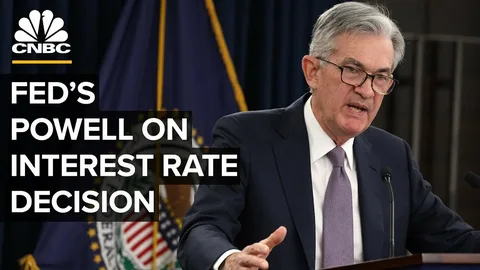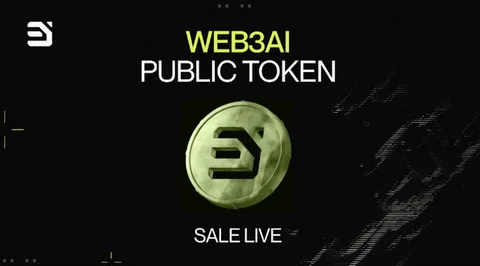Introduction
The Federal Reserve, often referred to simply as the FED, plays a pivotal role in shaping the financial stability and economic growth of the United States. Over the past few years, FED policy decisions have been closely scrutinized as inflation, unemployment rates, and economic growth have faced significant fluctuations.
A recent statement by a senior FED member has sparked interest among financial analysts and the general public alike: interest rate cuts may be on the horizon in 2025. This potential shift marks a significant change in the FED’s monetary strategy following an extended period of aggressive interest rate hikes aimed at controlling inflation.
In this post, we will explore why the FED might consider rate cuts in 2025, the broader economic implications, and how this policy shift might impact businesses, consumers, and global markets. As the FED’s decisions ripple across the global economy, understanding these potential changes is crucial.

1. The Current Economic Landscape: Why Rate Cuts Are on the Table
Over the past two years, the FED has been grappling with persistent inflation. To combat rising prices, it pursued a series of interest rate hikes. By increasing borrowing costs, it aimed to cool demand and bring inflation closer to its long-term target of 2%. While these measures have shown some success, challenges persist:
- Economic Growth Slowing: High borrowing costs have suppressed consumer spending and business investment, leading to a notable slowdown in GDP growth.
- Labor Market Cooling: While unemployment remains historically low, signs of cooling are evident as companies become cautious about hiring.
- Global Economic Risks: International markets, particularly in Europe and Asia, are also experiencing sluggish growth, which could compound domestic pressures.
A senior FED member recently addressed these concerns, signaling a possible shift in 2025. According to this official, if inflation continues its downward trajectory and economic growth remains fragile, it could pivot toward interest rate cuts. Such a move would aim to stimulate the economy, making borrowing cheaper for businesses and individuals alike.
2. The Rationale Behind FED Interest Rate Cuts
Understanding why it might lower interest rates requires a closer look at its dual mandate: promoting maximum employment and ensuring stable prices. Let’s break down the reasoning:
Inflation Control Achieved
The FED’s aggressive rate hikes have gradually brought inflation closer to its target. By 2025, projections suggest inflation may stabilize around 2-2.5%, leaving room for policy easing without risking a resurgence in price pressures.
Encouraging Economic Growth
High interest rates make borrowing expensive, discouraging spending and investment. To prevent prolonged economic stagnation or even recession, it might use rate cuts to reignite growth. This aligns with the senior FED member’s recent statements about recalibrating policies to support a balanced recovery.
Global Market Dynamics
The U.S. economy does not operate in isolation. Global central banks, including the European Central Bank (ECB) and the Bank of Japan, are also signaling potential shifts in their monetary policies. Coordinated rate cuts could provide a synchronized boost to global growth, mitigating the risk of uneven recovery.
3. Potential Impacts of FED Rate Cuts in 2025
The prospect of lower interest rates is a game-changer for various sectors of the economy. Here are some of the key effects we can anticipate:
Impact on Consumers
- Cheaper Loans: Lower interest rates mean reduced costs for mortgages, car loans, and credit cards. This would increase disposable income and boost consumer spending.
- Savings Rates Decline: On the flip side, savers may see lower returns on deposit accounts and other interest-sensitive instruments.
Impact on Businesses
- Increased Investment: Companies are more likely to borrow for expansion projects when rates are low, spurring job creation and innovation.
- Debt Relief: Firms with outstanding loans will benefit from reduced interest expenses, improving profitability.
Impact on Financial Markets
- Stock Market Rally: Historically, rate cuts have buoyed equity markets as investors seek higher returns in riskier assets.
- Bond Market Adjustments: Lower rates typically drive bond prices higher, benefiting fixed-income investors.
Global Trade Dynamics
A more accommodative FED policy could weaken the U.S. dollar, making American exports more competitive on the global stage. This could help address trade imbalances and support domestic manufacturers.
4. Risks and Challenges of Interest Rate Cuts
While interest rate cuts bring several benefits, they also carry risks that policymakers must carefully weigh. The senior FED member’s remarks acknowledged these challenges:
Risk of Overheating the Economy
Cutting rates too soon or too aggressively could lead to an overheated economy, with inflation climbing above the target again. This would force the FED to reverse course and hike rates once more, creating uncertainty.
Asset Bubbles
Historically, prolonged periods of low interest rates have contributed to speculative bubbles in real estate, stocks, and other asset classes. Policymakers must ensure that financial stability is not compromised.
Limited Policy Tools
If the economy faces a severe downturn after rates are cut, the FED would have fewer tools at its disposal to stimulate recovery. This scenario underscores the importance of timing and gradual implementation.
Conclusion: What Lies Ahead?
As we move closer to 2025, the FED’s policy decisions will be pivotal in shaping the economic outlook. The recent comments from a senior FED member highlight the delicate balancing act required to support growth while maintaining price stability. Should interest rate cuts materialize, their effects will reverberate across households, businesses, and global markets.
The discussion surrounding potential FED rate cuts is not just about numbers—it reflects broader questions about the future of the economy and the challenges of navigating a post-pandemic world. What do you think about these potential changes? Do you believe the FED’s strategy aligns with the current economic environment?
We’d love to hear your thoughts! Share your perspective in the comments below and join the conversation about this critical issue shaping our financial future.






